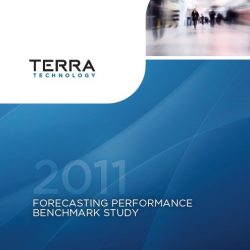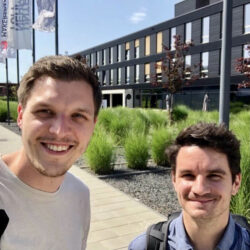Demand sensing: relying on AI, even in the face of disruption

A recent webinar by Supply Chain Media and E2open proved that demand sensing results in more reliable forecasts. Companies that are keen to supplement historical data with other types of internal and external data can use artificial intelligence (AI) to predict customer behaviour pretty accurately without human intervention. Despite this, many demand planners at Henkel deactivated the AI functionality as soon as the COVID-19 outbreak started. In hindsight they should have continued using it, because demand sensing adds considerable value even in disruptive times.
By Marcel te Lindert
Most companies base their demand planning primarily on historical data, which usually produces reasonable results. “After all, history repeats itself – except in the past year,” said Robert Byrne, Vice President of Supply Chain Solutions at E2open. Byrne was obviously referring to the COVID-19 pandemic which rendered most companies’ forecasts useless. He is an advocate of using additional data – demand signals – combined with artificial intelligence to improve the forecasting reliability. Byrne calls this ‘demand sensing’, but the approach has not yet been widely embraced. Research by E2open shows that only a quarter of the companies with a structural approach to demand planning have also implemented demand sensing.
Anticipating customer behaviour
Byrne’s ‘demand signals’ are any data that indicates how demand is developing – such as current sales figures and stock levels in the various sales channels, but also external data such as weather forecasts, competitors’ prices and the mood on social media. “Demand sensing is based on the realization that customer demand does not simply repeat itself, but instead is influenced by many different factors. Artificial intelligence can help us to predict how customers will behave based on those factors.”
Figures from E2open show that COVID-19 had a significant impact on supply chain performance, with many companies struggling to maintain their service levels. Companies that implemented demand sensing performed better than others, according to E2open. When countries in Europe had to close their borders, the forecast error rose by 26%. Although the error level rose at companies working with demand sensing too, it was nevertheless 18% lower than at companies without demand sensing. Byrne: “Those companies were better able to anticipate their customers’ behaviour.”
Unreliable forecasts
Henkel is one of the companies that has implemented demand sensing, for the reason mentioned by Byrne earlier in the webinar: the inadequacy of statistical forecasting methods based on historical data only. “The future will inevitably be different from the past. Anyone who wants to achieve superior results will have to look not only at historical data but also at the other factors that influence demand,” commented Jorden Rasquin who is in charge of international planning within Henkel’s detergent division.
The forecasting reliability within the detergents division was too low, said Rasquin. “In our more mature markets, we were achieving a reliability of 65 to 70%. However, that was for the month-level forecast, and that’s not the forecast that supply planners use as the basis for decision-making. When the monthly forecasts were broken down into item-level forecasts on a weekly basis, the reliability was a lot lower – sometimes less than 30% in our distribution centres. That’s where demand sensing can make a difference.”
Promotions and introductions
Rasquin mentioned two important factors that considerably influence demand but are difficult to predict using static forecasting methods: promotional campaigns and new product introductions. “On average, 30 to 40% of our sales are generated by products launched in the past 12 months. Often, a lot of information about the demand for these products is already available within the company, but it’s locked away in Excel sheets and never reaches the demand planner. Today’s techniques combined with artificial intelligence make it possible to utilize all that information when forecasting demand.”
Henkel already uses sales figures (point-of-sale data) as input for demand sensing, but the detergent manufacturer is in the process of expanding the number of demand signals. “We’re working together with our sales and marketing colleagues to explore whether we could also use information about our competitors as input, for example. After all, their promotional campaigns affect demand for our products too.”
Fully automated
Henkel initially implemented demand sensing to improve the short-term forecast. First of all, the demand planner gathers the forecasts inputs from the various sales departments together with other data. This is used to generate a consolidated demand plan with the help of SAP APO. “That plan, combined with all the relevant demand signals, forms the input for E2open’s demand sensing system. Every day, the system automatically generates a forecast for each article and it is sent directly to the supply planner. This process breaks down our country forecast into a weekly forecast at item-warehouse level without human intervention.”
This automated process calls for a shift in mindset from the demand planners, because they have to learn to blindly trust the demand sensing system. However, there are always exceptions which require human intervention, which is why Henkel enables its demand planners to decide whether they want to activate demand sensing or not on an item-by-item basis. “Ultimately, we want demand sensing to be used for 80% of our assortment.”
Staying in control
Henkel came nowhere near that percentage in the first few weeks of the COVID-19 outbreak. With all the disruptions in supply and demand causing so much chaos, many demand planners were afraid to rely on the demand sensing system. They themselves wanted to stay in control of the demand plans they sent to the supply planners rather than letting a machine do it. “That’s a logical reaction. But in hindsight, during the entire pandemic the process including the use of demand sensing clearly yielded better results than the process without it. This proves that demand sensing adds significant value – not only in normal times, but also in times of disruption.”
What’s more, the system never gets tired, according to Rasquin. “It unwaveringly analyses all items with the same level of priority, including the slow movers. That creates scalability. Demand planners can focus their attention on the fast movers, while the demand sensing machine takes care of the rest. There’s no doubt that the forecast for those items will improve.” Rasquin has even noticed that the demand sensing system keeps the demand planners on their toes: “They want to beat the machine. That creates a healthy sense of competition which has led to a behavioural change. Our planners are now more focused than ever on improving forecast reliability.”









